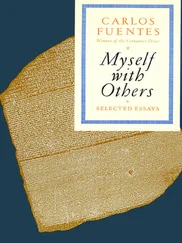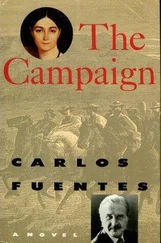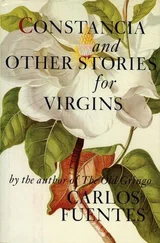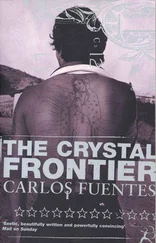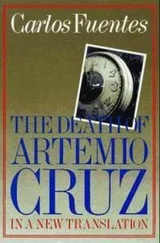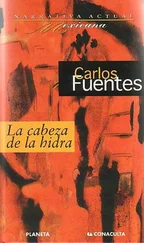“Armonía Aznar was an exemplary fighter,” said Juan Francisco López Greene when he unveiled the plaque in honor of the Catalan woman in the house where Laura and her family lived. “Like all the anarcho-syndicalists, she came to Veracruz. She arrived with the Spanish anarchist Amedeo Ferrés and secretly organized the printers and typographers during the Porfirio Díaz presidency. Then, during the Revolution, she fought in the House of the Workers of the World — with heroism and, which is more difficult, without glory, secretly delivering mail right here in Xalapa, carrying documents to and from Veracruz to Mexico City.”
Juan Francisco paused and sought out, among the hundred or so at the ceremony, the eyes of Laura Díaz.
“All she did was made possible thanks to the revolutionary generosity of Don Fernando Díaz, president of the bank, who allowed Armonía Aznar to take refuge here and carry out her work in secret. Don Fernando is ill, and I will be so bold as to salute him and thank him, his wife, and his daughter in the name of the working class. This discreet and valiant man acted in this way, he told us, in memory of his son Santiago Díaz, shot by thugs in the pay of the dictatorship. Honor to all of them.”
That night, Laura stared intensely into the mute eyes of her invalid father. Then she slowly repeated what Juan Francisco López Greene had said at the ceremony, and Fernando Díaz blinked. When Laura wrote on the little blackboard the family used to communicate with him, she wrote simply, THANK YOU FOR HONORING SANTIAGO. Then Fernando Díaz, as was his custom, opened his eyes very wide and made an immense effort not to blink. All of them, the women in the house, knew those two gestures well — blinking over and over again or not blinking until his eyeballs seemed ready to pop out of their sockets — though they had no idea what either meant. On this occasion, Fernando tried to raise his hands and clench his fists, but they fell on his lap, defeated. He simply arched his eyebrows like two circumflexes.
“Soon we’ll find a house where we can live and have hoarders right here on Bocanegra Street,” Mutti Leticia announced a few days later.
“I’ll read to Fernando every night,” said the writing aunt, Virginia, her lips tight and her eyes feverish. “Don’t worry, Laura.”
Laura went in to say good night to her mute father, to read passages from Jude the Obscure to him for half an hour, and she could imagine her father dead, his face made beautiful by death, death that would rejuvenate him. They would all have to wait for his death with confidence, even joy, because death would erase the traces of time from Don Fernando, and Laura would always have with her the image of a tender, strong man whenever she needed it.
“Don’t let this chance slip by,” said her aunt the pianist, Hilda Kelsen, that same night. “Look at my hands. You know what I could have been, isn’t that true, Laura? I never want you to have to say the same thing.”
Laura Díaz and Juan Francisco López Greene were married in a court in Xalapa on May 12, 1920, Laura’s birthday, and she who sang on the twelfth of May the Virgin dressed in white came walking into sight with her coat so gay, and the black Zampaya swept and sang ora la cachimbá-bimbá-bimbá now my black girl dance to me now my black girl dance away, and Laura Díaz went out with her husband on the Interoceanic to Mexico City and halfway there she burst into tears because she’d forgotten the Chinese doll Li Po in her pillows back in Xalapa and at the Tehuacán station Juan Francisco was told that President Venustiano Carranza had been assassinated at Tlaxcalantongo.
THERE ARE NO SEASONS in Mexico City. The dry period runs from November to March, and then comes the period of rains from April to October. There’s no way to get a grip on the weather except for the water and the sun, the real heads and tails of Mexico City. And that’s quite a lot. For Laura Díaz, the image of her husband, Juan Francisco López Greene, became permanently fixed one rainy night. Hatless, right in the center of the city, the Zócalo, addressing a multitude, Juan Francisco did not have to shout. His speaking voice was deep and strong, the opposite of his low, private voice. His image was the quintessence of combat, with his heavy soaked hair dripping over the nape of his neck, on his forehead and ears, water pouring off his eyebrows, out of his eyes, and into his mouth, with an oilcloth cape covering his huge body, which she, on their newlywed nights, had approached with fear, respect, suspicion, and gratitude. At the age of twenty-four, Laura D  az had chosen.
az had chosen.
She remembered the boys at provincial dances whom she couldn’t tell one from the other. They were interchangeable, pleasant, elegant …
“Laura, the thing is, he’s very ugly.”
“But Elizabeth, he doesn’t look like anyone else.”
“He’s dark-skinned.”
“No more so than my Aunt María de la O.”
“But you’re not going to marry her, are you? There are so many white boys in Veracruz.”
“This one’s stranger or more dangerous, I don’t know.”
“And that’s why you chose him? You’re crazy! And how dangerous, Laura! I envy you, but I’m also sorry for you.”
The newlyweds left Xalapa, and no sooner had Laura reached Mexico’s central plateau than she missed the beauty and balance of the provincial capital, its nights so perfect that with each evening they bestowed new life on all things. She would remember her home, and her family misfortunes would seem to dissolve in the all-encompassing harmony of the life she’d lived and recalled with her parents, with Santiago, with her maiden aunts, and with her dead grandparents.
She said the word “harmony” and was upset by the memory of the heroic Catalan anarchist whom Juan Francisco referred to that rainy evening when defending the eight-hour workday, minimum wage, paid maternity leave, paid vacations, everything the Revolution had promised, he was saying in his deep, resonant voice, speaking to the crowd gathered in the plaza to defend and demand enactment of Article 123 of the Constitution that May 1, 1922, in the nocturnal rain. This was the first time in the history of humanity that the right to work and the protection of the worker had constitutional status, which was why the Mexican Revolution was a real revolution, not a military coup, not a revolt, not the kind of riot that took place elsewhere in Spanish America. What happened in Mexico was different, unique, everything created from the ground up in the name of the people, by the people, Juan Francisco was saying to the two thousand people gathered in the rain. He was saying it to the rain itself, to the night as it fell, to the new government, successors to the assassinated Venustiano Carranza, who had been eliminated, everyone thought, by the triumvirate of the Agua Prieta rebellion — Calles, Obregón, and de la Huerta — who now held power. López Greene addressed all of them in the name of the Revolution, but he was also speaking to Laura Díaz, his young wife just arrived from the provinces. A beautiful girl, tall, strange with her conspicuous, aquiline features, beautiful because of her very strangeness; he’s talking to me as well, to me, I’m part of his words, I have to be part of his speech.
Now it was raining all over the central valley, and she was remembering the ascent in the train from Xalapa to the Buenavista station in Mexico City. I’m exchanging sand for stone, forest for desert, araucarias for cactus. The ascent to the central plateau passed through a landscape of mists and burned lands, then over a hard plain of quarries and workers quarrying stone who looked like stone; occasional poplars with silvery leaves. The landscape took Laura’s breath away and made her thirsty.
Читать дальше

 az had chosen.
az had chosen.
